An eastern wind of change is blowing across one of India’s easternmost states, Nagaland. The state already shares many affinities with the East Asian countries, food habits being one. Shiitake Mushroom is an edible wood-dwelling fungus native to East Asia and is sought after for its medicinal properties. It is called the ‘superfood powerhouse’ as it reportedly supports immunity, cardiovascular health, and also fights cancer cells.
Shiitake is now mushrooming in many parts of Nagaland, becoming the second most produced mushroom in the state, the first being the common Oyster Mushroom. Recently, as part of a state government’s initiative, it was decided to establish 108 low cost Shiitake Mushroom units to meet the demands for these increasingly becoming popular mushroom.
In Mokokchung district, the forest department is helping villagers set up the small units of Shiitake Mushroom cultivation and aiding them in every way possible, right from training to selling. The pilot project is led by a lady Indian Forest Service officer from the local Ao tribe. Indian Masterminds spoke to this 2011-batch IFS officer, Dr. Sentitula, who is the DFO of Mokokchung, to get more details.
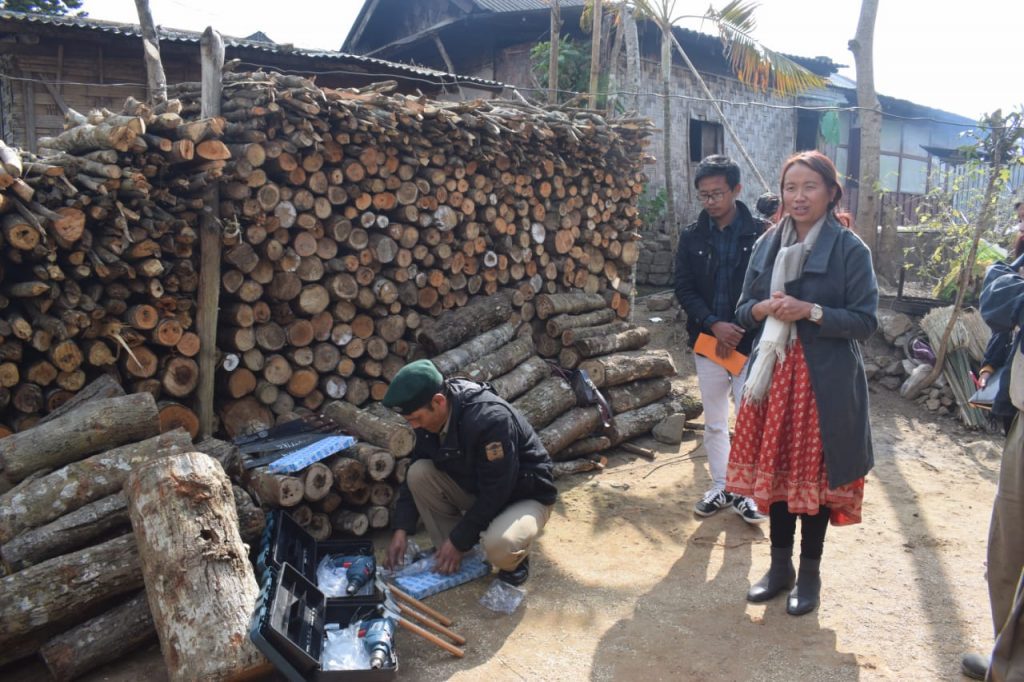
IDEAL CONDITIONS
The tiny state of Nagaland is these days seeing a mushrooming of Shiitake, and the Mokokchung district, the cultural nerve centre of the Ao tribe, has also jumped onto the bandwagon.
Shiitake mushroom flourishes in cooler climes and Mokokchung, located at an elevation of 1325 metres above sea level, has a mild climate throughout the year with maximum temperature hovering in the mid twenties. The district also witnesses a lot of mist in the rainy months which is ideal for Shiitake cultivation as this mushroom thrives in moist conditions.
TRAINING FOR VILLAGERS
Shiitake Mushroom cultivation was started as a pilot project by the Mokokchung Forest department for livelihood improvement at Mopungchuket village under the Nagaland Forest Management Project. Three SHGs were selected for the project that was aided by the Japanese International Cooperation Agency (JICA).
Interestingly, the name ‘Shiitake’ comes from the Japanese words ‘shii’, the name of a tree, and ‘take’ which means mushroom. However, although Japan is one of the bulk producers of Shiitake Mushroom in the world now, the earliest known record of Shiitake cultivation dates back to 1209 in China, during the time of the Song Dynasty, making Shiitake the world’s oldest mushroom.
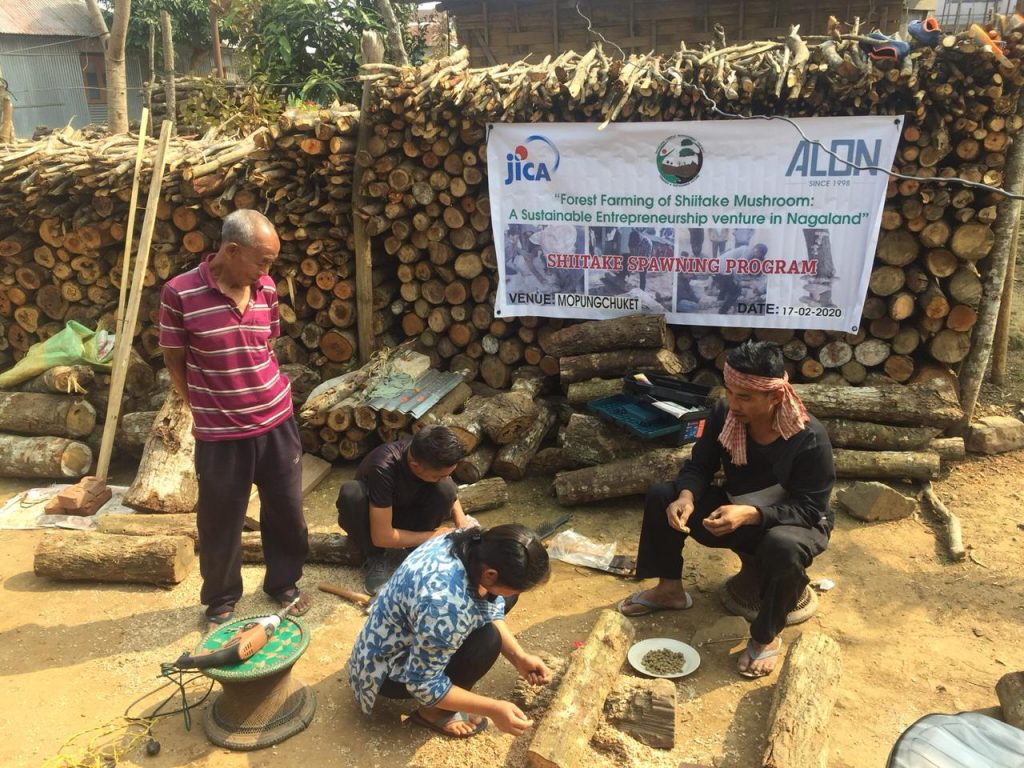
Dr. Sentitula said, “Through this project, the forest department imparted training on Shiitake Mushroom cultivation to provide an additional livelihood to the villagers who were mostly into poultry farming.”
During the training, Shiitake spawn innoculation and technical guidance were provided to the farmers and so were equipments such as power driller, saw and hammer. A contingency amount was also given to the SHGs for starting cultivation. As this mushroom grows naturally on tree logs, around 1300 logs of small to medium diametres of species such as Castanopsis and Oak were used for Shiitake spawn inoculation.
LOW COST, HIGH PROFIT
This mushroom is gaining popularity in the district for its ability to grow on logs with less land requirement, low labour, and high profit. Dead tree logs are inoculated with Shiitake spawns which then fruit.
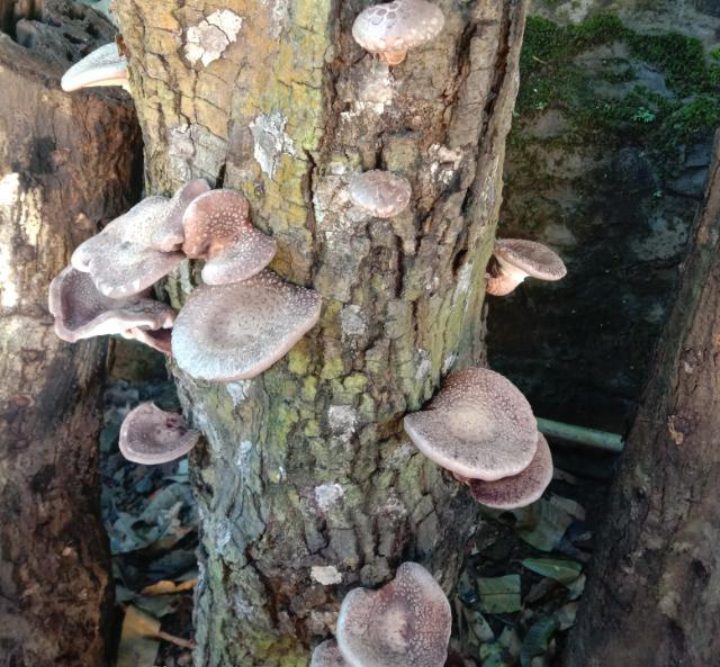
“If the fruiting is good, the villagers earn around INR 60,000 per harvest. But, since Shiitake Mushroom cultivation is a seasonal activity, the farmers harvest only once or twice in a year, and the rest of the time, they are engaged in other livelihood activities like poultry farming, piggery, and Jhum cultivation,” Dr. Sentitula said.
PILOT LEARNINGS
The pilot project was a big learning experience not just for the villagers but for the forest officials involved in it as well. Earlier it was thought that logs of the Fagaceae family like Castanopsis are more favourable. However, the Chestnut tree from the Castanopsis variety has a thin bark and it was observed during fruiting that the size of mushroom was smaller and the bark peeled off sooner. Betula log, which again has thin bark, was also tried and comparatively less fruiting was observed here too.
“Thick bark is better, so Oak tree logs perform better than Chestnut logs. Other tree logs like Jamun and Alder are also being tried out this year,” Dr. Sentitula said.
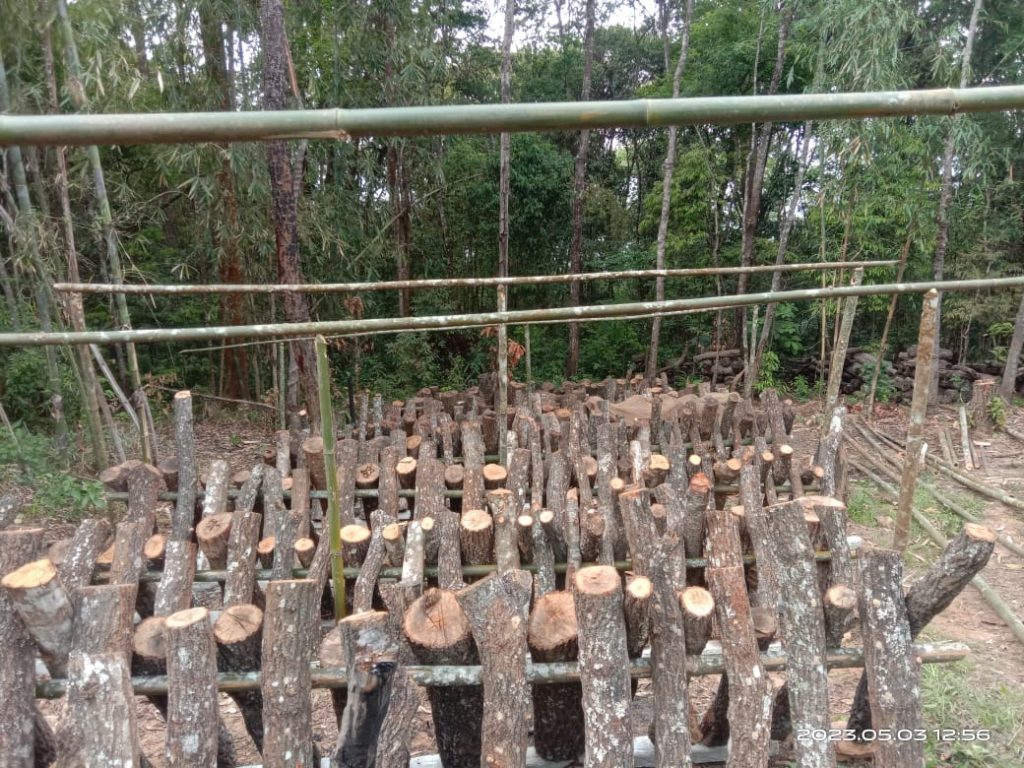
Another important learning was that around the time for fruiting, cleaning of the inoculated logs along with shock waves and then wetting ensures profuse fruiting. Shock waves is given with a hammer by tapping on one end of the log.
“Another takeaway from the pilot project is that maintaining small quantity of logs provide for better management. Instead of going in for bulk cultivation, we should focus on small intensive cultivation with optimum output,” Dr. Sentitula said.
EASY MARKET
A good thing is that the cultivators do not have to look too far for a market for their produce as it is lapped up fast within the district only. Mushrooms are a local favourite and are used in their cuisines. Dr. Sentitula said, “There are two ways of preparation. First, the rice is grinded and mushroom is prepared along with it, which is then taken as a soup or main curry. The second is a kind of chutney preparation without adding any water. Only some spices and bamboo shoot are added.”
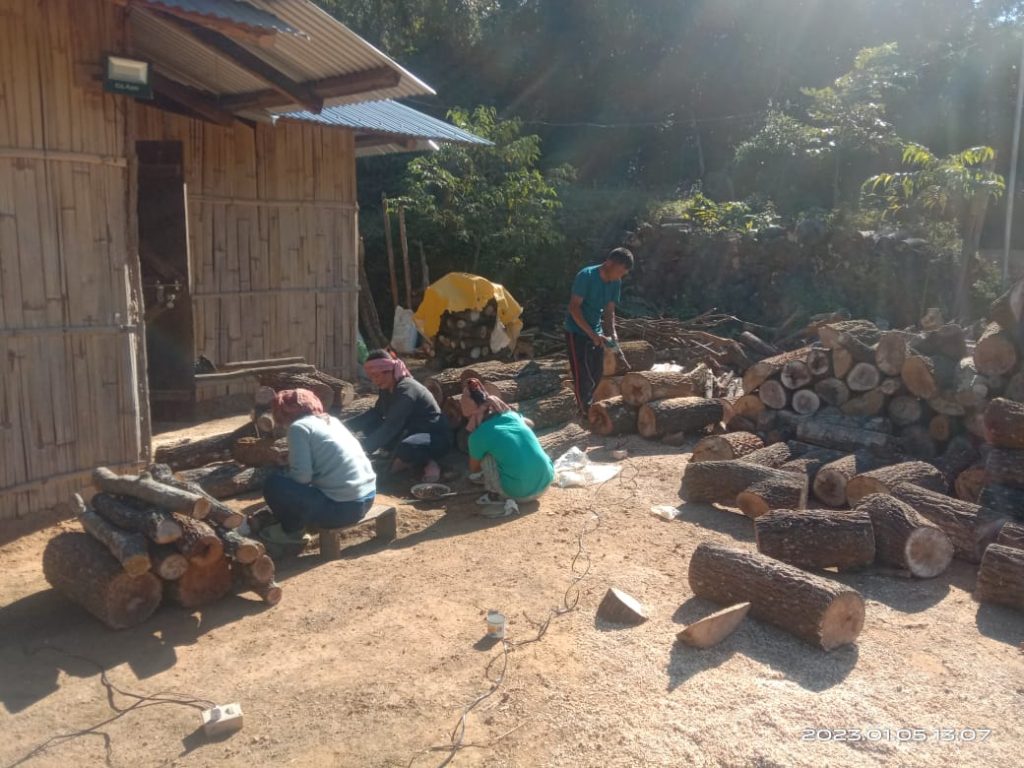
Not just in Nagaland, Shiitake Mushroom’s demand is high in other parts of the country and in the international market too, as it is not so commonly found. By keeping up the thrust and the momentum going for mushroom cultivation in the state, Nagaland could well be on the way to becoming a major player in the Shiitake Mushroom markets worldwide.

































